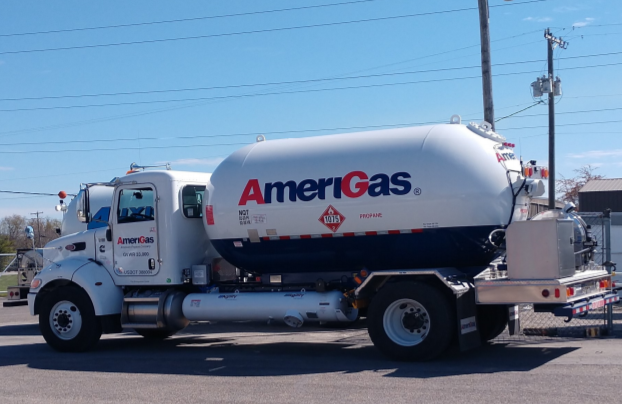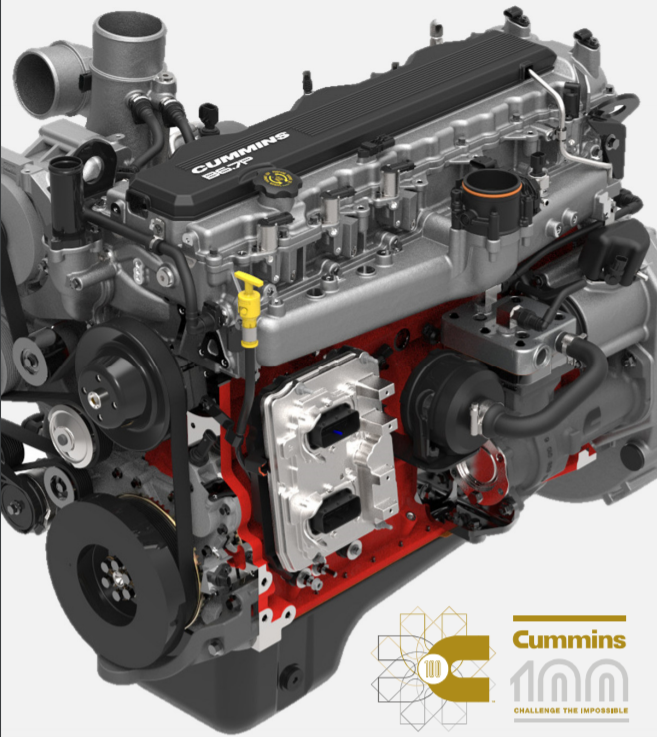Cummins designs MD propane engine with ‘diesel-like’ performance
COLUMBUS, Ind. – Cummins, working with the Propane Education and Research Council (PERC), has developed a medium-duty propane demonstration engine that it claims will outperform diesel in key areas.
Based on its B6.7 diesel, the 6.7 LPG direct injection engine could be well suited for a range of medium-duty applications, offering a 20-40% cost savings over 10 years compared to a diesel with similar displacement and torque curve.
That savings, of course, is heavily dependent on diesel and propane prices, but PERC and Cummins also say the new design for the first time offers performance matching or exceeding diesel in several key areas such as torque and power output.

The project began with a trade show booth visit in 2014, recalled Cinch Munson, senior vice-president, business development with PERC. After discussing the merits of propane with Cummins, the program was officially launched in 2016.
“The goal was to develop an advanced concept that leverages the performance of the fuel,” said Sam Geckler, product line architect with Cummins. After hundreds of hours of design, and thousands more in simulations, an LPG engine offering “diesel engine-like performance” was developed.
Some of the features include a high compression ratio, an aluminum cylinder heard, and a purpose-built fuel system. Many of the base components were carried over from the B6.7 diesel. The first engine was installed in Peterbilt 337, initially fitted with a flatdeck to allow easier access to components, but later converted to a propane bobtail delivered to AmeriGas for real world testing.

The truck has put on about 8,000 miles, the last 2,000 of which were fully loaded delivering propane around Bloomington, Ind.
The project is currently at the “demonstration level,” said Geckler, adding “that doesn’t mean concept level, where you only build one. We built multiple engines and we are now ready to go off and show what this engine can do in a vehicle in the field.”
Saradhi Rengarajan, technical project leader with Cummins, said the most exciting aspect of the project was the torque the designers were able to achieve. Peak torque is 900 lb.-ft., far exceeding propane engines already in the market.
The efficiency of the engine has also led to favorable emissions performance, with CO2 emissions 11% less than a diesel, Rengarajan noted, while traditionally LPG engines had greater CO2 output than diesels. He said the 6.7L LPG offers a 28% improvement in CO2 output compared to propane engines in the market today.
Part of that CO2 improvement came from optimization of the combustion system, which allowed Cummins to avoid exhaust gas recirculation (EGR). The biggest challenge designers had to overcome when testing the engine was related to injector failures, which caused the company to adopt a vapour phase injection (VPI) system, sacrificing up to 1% in thermal efficiency in exchange for greater reliability.
But Rengarajan said the VPI system has performed well, even with cold starts at 10F or colder, alleviating a significant concern regarding vapour systems.
As for when we may see the Cummins 6.7 LPG engine in the market, more analysis will first have to be done to determine the market demand.
“Cummins would require further inputs on the market needs and the business case to commit to a product development and commercialization program,” the company said in response to a question about future availability.
Have your say
This is a moderated forum. Comments will no longer be published unless they are accompanied by a first and last name and a verifiable email address. (Today's Trucking will not publish or share the email address.) Profane language and content deemed to be libelous, racist, or threatening in nature will not be published under any circumstances.
Great article, and even better news!!!
This development is very much suitable for the Mexican market, due to the high altitude cities, and many highways in between two great mountain ranges.
Please keep us posted!
we are running 16 soon to be 20 propane blue bird school buses in manitoba . We have been slowly replacing our diesels since 2014 . this exciting news and we cant wait to hear more news on this engine
We would need to see some power out put numbers before anything else. Clamming “diesel like performance” is a big statement. If it indeed is diesel like I would like to see something bigger than an Allison 2000 series transmission behind it. I would also like to know what the Amerigas unit is averaging mpg. I’ve had experience with other LP powered bobtail’s and have a somewhat sour taste in my mouth. I would like to add “parts availability” is a must if a customer is going to run even a low number of these in their fleet. If I start off with 3-5 of these units I’d like to know I can get parts from my local dealer. I don’t need a new truck that is down for a week, then two weeks, now three weeks because parts availability is tight. Last thing. It has to make 600ftlbs of torque or more. Some parts of the country may be able to get away with less then 500ftlbs, but I can’t. I need that torque for not only the road ways in my area but driveways can be worse. Also it would be better for resale if it has comparable power output of a diesel.
Cummins bought out the Onan 3.4 6cyl diesel in the late 1980s. I had the unfortunate experience of buying a Grimmerschmidt Air compressor with one of these. Cummins made the wet-sleeved Onan into a cast in sleeved block. High compression and problems with injector leakage causing knocking on starting and runaway. I would almost bet with common rail propane injection, the original Onan wet-sleeve block would be AMAZING. These could make a comeback in small pickups and industrial applications.
Is this engine ready for the market and can I order one from my choice of truck manufacturer ?
Great article. Would this engine be CARB compliant for the state of California? Thank you.